C.A.A. Savastano's Blog, page 3
October 26, 2023
A Return to the Ochelli Effect
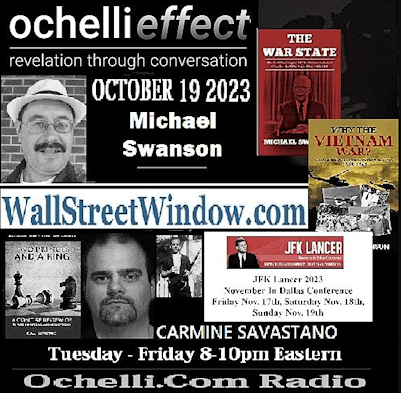
Authors Mike Swanson and Carmine Savastano join the Ochelli Effect to discuss evidence spanning intelligence history to their more recent discoveries in the latest official released documents. Join them and Chuck as they review current articles and research offered by TPAAK Historical Research and The Wall Street Window.
October 8, 2023
How The Stories Of These Soviet Cold War Defectors Reveal The Intelligence Abyss pt. 6
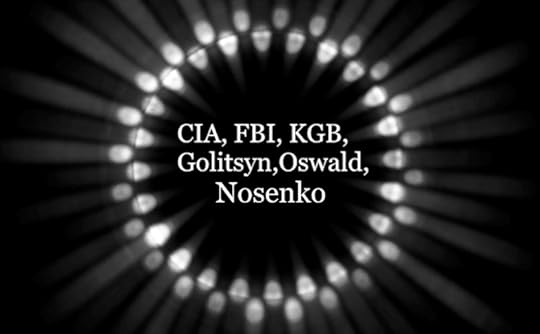
Within the aftermath of President John F. Kennedy’s assassination the Central Intelligence Agency had internally declared Lee Harvey Oswald guilty within forty-eight hours.i The Federal Bureau of Investigation granted the alleged shooter seventy-two hours before its determination of guilt the same day Jack Ruby shot Oswald. American intelligence groups were desperate to find an expedient solution and their suspect’s inability to defend himself was ideal. However, some within the CIA’s leadership believed this had to be another Soviet plot and Oswald was cast in the role of Soviet agent. Such ideas endangered the US government’s allegations that Oswald acted by himself but those not privately endorsing this idea became suspects in Central Intelligence Agency’s hunt for traitors.
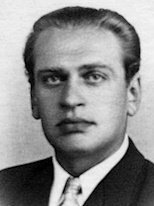
“Yuri” Nosenko Amid Nineteen Fifty-seven
Amongst the earliest targets of the CIA’s mole hunt to discover false agents was KGB defector Yuriy Ivanovich Nosenko. He was the son of a Russian government minister and following Nosenko’s time in the Soviet Navy he was assigned to the GRU Soviet intelligence organization. Yuriy was subsequently transferred to the KGB and provided information to Agency officers within Switzerland during the early nineteen sixties. The KGB officer had seemingly proved his bonafides and was accepted for a time by officials as reliable. Yet Nosenko’s credibility two years later had been tarnished by the allegations of prior KGB defector Anatoliy Golitsyn.
Counterintelligence Staff Chief James Angleton had Soviet Russia Division officer Tennent Bagley review Anatoliy Golitsyn’s files. This inspection convinced Bagley that KGB defector Yuriy Nosenko was a Russian plant despite prior approving the Soviet defector's credentials.ii When Nosenko reached out again to make contact Bagley assumed it was a provocation but case officer George Kisevalter supported the former Soviet official was genuine. Two months following the death of America’s president Bagley and Kisevalter would travel to Switzerland amid a blustery winter night to meet Yuriy Nosenko. A seeming repetition of history amongst nineteen sixty-four brought all three men together again inside a Geneva safe house years after Nosenko’s first debriefing. As can be imagined Lee Harvey Oswald was a highly discussed topic and the information the KGB officer provided would stun them.
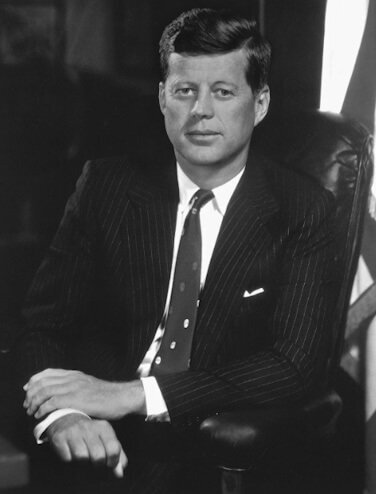
The President’s Commmission Inspected John F. Kennedy’s Death
Nosenko claimed that he personally observed regular notations within Oswald’s file and denied the KGB had ever attempted to use the dead man for operational purposes. His statements disturbed some at the Agency who already had decided the Soviets used Oswald and the investigating President’s Commission disregarded Nosenko’s words. The defector would additionally provide the Agency with operational information and later that fall one lead provided would reveal a Soviet operative named “Sasha” in the US Army fitting Anatoliy Golitsyn’s mole description. Nosenko defected a month later while supposedly facing recall to Moscow and petitioned the CIA for relocation to the US. His request was sent to Agency headquarters and they agreed to protect and exfiltrate the defector from Europe to America. Kisevalter observed the situation as potentially useful for additional intelligence gathering while Bagley seemingly believed this presented an opportunity to snare a Russian plant. Nosenko was accepted despite the varying motivations of those overseeing his case but his new life in America would soon resemble a prison when that spring passed.

Newton Miler Amongst the nineteen Forties
The Counterintelligence Staff Special Investigations Group (CISIG) was still determined to find the presumed mole within the Agency’s ranks amidst the same period. Birch O’Neal was James Angleton’s direct subordinate overseeing CISIG’s secret review of government employees. He was one of many former Federal Bureau of Investigation agents that subsequently left its ranks for employment with the CIA. Under a cloud of mystery O’Neal supported by CISIG Deputy Chief Newton S. Miler would undertake related investigations. “Scotty” Miler was recruited by US intelligence in the course of nineteen forty-six and served the Agency in the role of case officer handling agents during the nineteen fifties. As the next decade passed Miler was a station chief in Ethiopia and transferred at James Angleton’s request to CISIG. Amongst his time working for the special investigations unit Miler was drawn into the Golitsyn accusations while other members not adhering to a mole’s existence left the counterintelligence group.
A significant amount of the Agency counterintelligence staff’s attention was set upon examining mole hunt suspects within varying official groups. Officials did not consider how much of the CIA’s resources were spent elsewhere that should have been dedicated to assisting the President’s Commission investigation. The counterintelligence staff’s would oversee the Agency’s later Kennedy investigation and its preoccupation with hunting moles likely affected whatever support it offered the Commission. Angleton believed that Nosenko was lying about Lee Harvey Oswald and thus Golitsyn’s alleged immense Deszinformatsiya (Disinformation) Plot was seemingly underway. The counterintelligence staff believed, as several in the Agency did, that President John F. Kennedy’s assassination was just another Soviet authored plot. A deed the KGB sought to distance themselves from by sending “false” defectors akin to Nosenko.
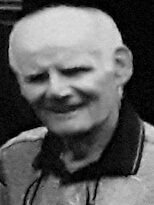
Richard Kovich After Career with the Agency
CISIG was inspecting Soviet Division officer Richard Kovich based on the parameters set by defector Anatoliy Golitsyn amongst the summer of nineteen sixty-four. Kovich joined the Agency and by the nineteen fifties was assisting George Kisevalter in the handling of several valuable defectors that included Pyotr Popov and Mikhail Federov. He trained agents on defector procedures at headquarters and served in the role of recruitment agent for division sources abroad. Kovich in the course of nineteen sixty-four was returning from an extended assignment to the Agency’s Vienna Station but no promotion awaited him. Despite his success undertaking oversees projects he was placed in a proverbial employment limbo due to James Angleton blocking his promotion.iii The unfortunate Yuriy Nosenko was simultaneously entering a literal hellscape crafted by some of the CIA’s leadership.
Nosenko was in the beginning handled akin to other KGB defectors but several internal official beliefs and suspicions would conspire to alter his circumstances. He was provided housing, a vacation, and spending money before they began hostile interrogations. Ironically, it was leaders in the eventually crippled Soviet Russia Division that supported early doubts regarding Nosenko and the need to break his will. The FBI would again inform the Agency that Nosenko appeared legitimate and his information was useful but to no avail. The Soviet defector was captured and incarcerated within a cell following a fixed result polygraph. Officials inspecting the polygraph would later attest the examination’s “conclusions...were a gross misinterpretation...in some instances the Subject was deemed to be lying when it is know he was telling the truth.”iv
Further review of Nosenko’s treatment states “Although Nosenko had already contributed considerable intelligence of value...Nosenko was treated as one whose guilt had been established.” Yet no trial occurred, contrary evidence was disregarded, and the Agency hunters did not bother to prove what them claimed. Yuriy was moved from one holding area to a cramped attic with stifling heat inside a CIA safe house under twenty-four hour observation. One related document states the only “break” the defector received from solitary confinement were his varying interrogations. In the course of these interrogations Anatoliy Golitsyn began advising officials how to force Nosenko to confess and they determined a policy of removing the scant freedoms he was permitted. If Nosenko did not conform to the requests of his interrogators he would lose “cigarettes, table, chair, reading material, ruler, paper and pencil”. Yet this seemingly nightmarish attic cell with no human contact beyond accusations was heavenly compared to the years of captivity awaiting Nosenko.
The counterintelligence staff at Golitsyn’s suggestion began a deeper investigation of Kovich as nineteen sixty-five passed and within two years had Kovich’s home phone under constant surveillance. Yet the Federal Bureau of Investigation disputed that Golitsyn’s varying ideas would lead to a KGB mole and by extension contended the research of Agency counterintelligence staff. v vi James Angleton began to observe potential suspects at nearly each turn and denied the promotion of useful officers without any evidence of their guilt. Documents additionally support the mole hunters focused on lower ranking division officers and staff for multiple strategic reasons. Angleton likely realized that accusations targeting leading Agency officers might damage his own power base and end the widespread search. CISIG’s quest had thus far weakened the ability of the CIA to conduct Soviet operations due to a presupposition that most sources would be disinformation agents. Peter Karlow, Richard Kovich, and Yuriy Nosenko were just the beginning of a growing list of the mole’s hunts victims.
Sincerely,
C.A.A. Savastano
i. House Select Committee on Assassinations, Segregated Central Intelligence Agency File, Staff Notes, (n.d.), CIA Performance Study, Mary Ferrell Foundation, maryferrell.org, National Archives and Records Administration Number: 180-10147-10179
ii. Central Intelligence Agency, (n.d.), Study: “The Monster Plot” aka The “Hart Report”, MFF, maryferrell.org, pp. 13-15, NARA ID: 104-10534-10205
iii. Adam Bernstien, February 27, 2006, CIA Officer Richard Kovich, The Washington Post, washingtonpost.com
iv. CIA, Study: “The Monster Plot”, p. 36
v. Federal Bureau of Investigation, March 15, 1965, No Title, Interview...With Anatoliy M. Golitsyn, NARA ID: 124-10333-1007
vi. Central Intelligence Agency, Janaury 4, 1967, File Card Review, U.S. Citizens General Tab, Surveillance-Electronic-Kovich, R., NARA ID:104-10096-10321
Find the Wall Street Window version of this article here
Related Articles
How The Stories Of These Soviet Cold War Defectors Reveal The Intelligence Abyss
How The Stories Of These Soviet Cold War Defectors Reveal The Intelligence Abyss p. 2
How The Stories Of These Soviet Cold War Defectors Reveal The Intelligence Abyss p. 3
How The Stories Of These Soviet Cold War Defectors Reveal The Intelligence Abyss p. 4
How The Stories OF These Soviet Cold War Defectors Reveal The Intelligence Abyss p. 5
September 10, 2023
How The Stories Of These Soviet Cold War Defectors Reveal The Intelligence Abyss pt. 5

As the calendar fell upon the days of late 1962, the mole hunt inside Western intelligence began to expand within the United States. Fears of disinformation, false defectors, and the assumption of a traitor within its ranks began to internally damage the Central Intelligence Agency. Official attempts to discover and track disloyal intelligence employees had yet to render any solid leads or suspects. The effort to seek turncoats within the US intelligence community gained momentum with each new accusation and it began to spread. Other nations soon would be influenced by America’s search for penetration agents based upon the claims of a single defector.

KGB Defector ANATOLIY Golitsyn
Varying case officers of the CIA’s Soviet Division sought greater detail regarding the claims of defector Anatoliy Golitsyn. Yet Anatoliy began to grow tired of such questioning by the fall of 1962 and this was likely due to all the past accusations offered since his defection. One accusation Golitsyn offered to case officer Donald Deselyna in that period was the KGB developed a prior “contingency plan” to assassinate Richard Nixon if he was elected amidst 1960. The details however were vague and Deselyna, a later advocate for Golitsyn, could not offer verifiable evidence to corroborate the purported conspiracy.i Deselyna was seemingly a true believer in the KGB defector akin to James Angleton and even claimed that “none of the information ever provided by G had been disproven”. This is clearly false, just one of several disproven claims by Golitsyn was Israeli Prime Minster Golda Meir served the KGB. What Golitsyn claimed and others believed compared to his proven allegations were two entirely separate things.
Amidst this earlier period the defector turned adviser further told related officials not just the US had a problem with unseen traitors, but France did as well. Golitsyn would allege that spies had entered the French government and lurked in two of France’s intelligence groups. Golitsyn asserted the Direction de la Surveillance du Territorie (DST) responsible for internal French security and Service de Documentation Exterieure et dec Contre-espionnage (SDECE) conducting foreign operations were breached. These allegations were heeded by officials and the KGB defector was debriefed by French intelligence but they did not follow up on several of his allegations. The official response appears due to some claims by Golitsyn lacking evidence but others were ignored because of potential damage to US and French political relations. Finding this intolerable, James Angleton began to directly accuse members of France’s intelligence community of being traitors. Despite the attempts of French officials, Angleton’s claims led to some internal political backlash and damaged intelligence relationships for a time but no moles were discovered.ii
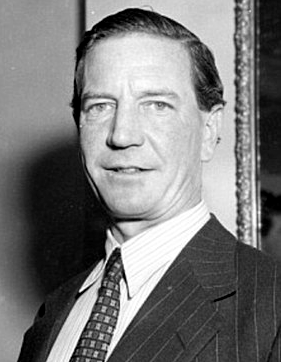
The Mole inside MI6, H. “KIM” Philby
Anatoliy Golitsyn’s further alleged the British government and intelligence agencies had been infiltrated by the KGB. Indeed British moles such as members of the Cambridge Five and compromised officials were revealed during the 1950s and widespread suspicion was palpable in that era. To address these allegations James Angleton contacted Security Service (MI5) counterintelligence officer Arthur Martin and he debriefed the KGB defector. As 1963 began Harold “Kim” Philby confirmed his past decades of betraying Western Intelligence and defected from Beirut to Moscow.
James Angleton subsequently was consumed with apprehending Golitsyn’s purported mole in part due to his prior friendly associations with Kim Philby. Angleton, like so many others, had been convinced by the facade of the devious past British intelligence operative before his unmasking. This grand failure was a harsh reminder to several officials in Western intelligence and many were determined to never allow it to happen again. Golitsyn reportedly was exhausted from continued Agency debriefings but was provided a welcome diversion months later. MI5’s Arthur Martin invited Anatoliy and his family to England for additional intelligence debriefings amid the spring of 1963. Golitsyn’s allegations spread to a third nation and the mole hunt within England’s intelligence groups had begun.

UK Prime Minster James H. Wilson
The British political landscape was already rife with political scandals and intelligence failures following the arrival of Anatoliy Golitsyn. Agency officials later confirmed the KGB defector informed English intelligence that Labour Party opposition leader Harold Wilson served Moscow. Based on rumor, speculations, and Golitsyn’s own contrivances he deemed the KGB had assassinated Wilson’s predecessor to empower him. Thus Wilson according to some in MI5 had been tainted by Soviet intelligence and this claim would affect the English government for several years.iii Many people in the English politician’s social circles fell under suspicion after Golitsyn’s accusations spread including some who fled Soviet held areas following WWII. Wilson’s second term resignation was reportedly due to his paranoia and the continuing intervention of his own government’s intelligence group.
Despite the enormity of his charge, Golitsyn after further collaboration with British intelligence claimed MI5’s leader Sir Roger Hollis and others connected to him were also Russian pawns. Following these declarations staff within MI5 began surveil and investigate their own leaders in search of additional moles akin to Kim Philby. One investigating member of MI5 regarding Hollis stated, “I had faith in his treachery as another man might have faith in God.” Yet the faith demonstrated by some in US and British intelligence was often misplaced without evidence to prove their assumptions. This series of claims would haunt the British landscape beyond the retirement of both MI5 suspects without any mole discovered. Golitsyn’s stay in England was cut short after his name was leaked to the international media and he returned to American in the summer of 1963. British and US intelligence relations were damaged after each accused the other of publicly revealing the defector’s identity to further their own interests.
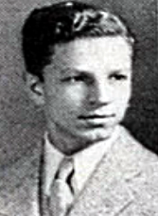
CISIG Leader B.d. O’ neal
As Golitsyn returned to James Angleton’s supervision the hunt for moles ended the career of Serge Peter Karlow.iv Angleton now would begin allowing Golitsyn to search for the elusive mole code named “Sascha” within classified materials and Agency employee files. The mole hunt was managed then by Counterintelligence Staff’s Special Investigations Group (CISIG) Chief Birch O’Neal with roughly seven other agents. O’Neal was a Californian with a law degree and was employed by the Federal Bureau of Investigation during the 1930s. He was the chief of multiple Agency stations amongst the next decade and by 1954 he was supporting operation PBSUCCESS to overthrow the government of Guatemala. He was reassigned to headquarters and became part of the Counterintelligence Staff amidst the nineteen sixties but he could not manage the endeavor alone.
Now armed with classified employee files and the support of CISIG Golitsyn decided he found a new suspect with necessary traits, Richard Kovich. He possessed a Slavic background, his name began with the letter K, and he supported defector operations. These details were seemingly enough for the CISIG to begin operations targeting the latest mole suspect and Kovich’s days were numbered. Despite the endless faith invested within Golitsyn by the CISIG, other groups such as West German intelligence were not impressed or convinced of his bonafides during this period.v They contemplated if Golitsyn was responsible for compromising some of their agents and operations with his vast array of claims.
The KGB officer’s prior allegation that defectors following him were provocation agents increased official paranoia and fueled James Angleton's pursuit of a presumed traitor. As these men widened the field of suspects the rift amongst officials became an expanding intelligence abyss. A preemptive mistrust of nearly anyone conforming to Anatoliy Golitsyn’s vague biography of Sascha began to destabilize some operations and morale. By these standards if a suspect had any ties to Russia or even have traveled to the Soviet Union it was indicative of guilt. Peter Karlow was the first lost career inside the abyss of suspicions, but its first seeming victim was Russian intelligence employee Alexsandr Cherepanov.
Amidst November of 1963 KGB Second Chief Directorate officer Alexsandr Nikolaevich Cherepanov gave a package of documents to a couple for delivery to the US Moscow Embassy. The visiting couple did as he requested and this seeming intelligence boon was the source of friction among American officials. The Chief of Moscow Station Paul Garbler was embroiled in a heated exchange with embassy diplomatic staff concerning the documents sent by Cherepanov. Legally ranking diplomatic officials believed the documents should be returned to Russian authorities but Garbler utterly disagreed and believed their return would cause whomever sent them to be killed. American diplomats allowed Garbler to copy the documents but returned them and Russian officials sent the files to the KGB for review.
Upon a late November morning within the city of Dallas that same year President John F. Kennedy was assassinated, his alleged murderer was killed two days later. Desperate Agency leaders without evidence were quick to internally blame Russian intelligence a mere day later.vi Lee Harvey Oswald had been to Russia and thus anyone in that period with Soviet connections was a possible CISIG suspect. The next month Alexsandr Cherepanov was arrested fleeing the Soviet Union because the papers he gave American diplomats were returned to the KGB.vii The documents led Russian intelligence to Cherepanov and he was subsequently executed for the attempt to collaborate with US officials.
Sincerely,
C.A.A. Savastano
References:
i. House Select Committee on Assassinations, August 26, 1978, Security Classified Files, Contact Report with Donald Deneslva, United States National Archives and Records Administration Number: 180-10110-10145, pp. 1-3, archives.gov
ii. David Wise, 1992, Molehunt: The Secret search for Traitors that Shattered the CIA, Random House, New York, pp. 106-112
iii. Malcolm Gladwell, July 20, 1994, Trust No One: Kim Philby and the hazards of mistrust, The New Yorker, newyorker.com
iv. C.A.A. Savastano, How The Stories of These Soviet Cold War Defectors Reveal The Intelligence Abyss pt. 4, TPAAK Historical Research, tpaak.com
v. Central Intelligence Agency, October 6, 1963, Dispatch from Chief of Munich Base, archives.gov, p. 2, National Archives and Records Administration Number: 104-101272-10217
vi. CIA, November 23, 1963, Cable from Chief, SR Division, re possible KGB role in Kennedy Slaying, archives.gov, p. 2, NARA ID: 104-10431-10060
vii. Frank J. Rafalko, (n.d.), A Counterintelligence Reader Volume 3, Chapter 2: Counterintelligence in the Turbulent 1960s and 1970s, Federation of American Scientists Intelligence Research Program, fas.org, pp. 195-196
Find the Wall Street Window version and other articles by C.A.A. Savastano here
Related Articles
How The Stories Of These Soviet Cold War Defectors Reveal The Intelligence Abyss
How The Stories Of These Soviet Cold War Defectors Reveal The Intelligence Abyss p. 2
How The Stories Of These Soviet Cold War Defectors Reveal The Intelligence Abyss p. 3
How The Stories Of These Soviet Cold War Defectors Reveal The Intelligence Abyss p. 4
August 28, 2023
THE IMPROVED CONSOLIDATED CIA FILES


The Consolidated CIA files section has been enhanced with a new subject directory, hundreds of new files, and expanded biographic information. It now contains over sixty intriguing Central Intelligence Agency figures and related official documents, their code names, and operational information. Each subject is now featured with a page containing an expanded biographic profile and most contain new documents and less redacted versions of prior releases.

August 8, 2023
How The Stories Of These Soviet Cold War Defectors Reveal The Intelligence Abyss pt. 4

The endless accusations of moles being present in most of Western intelligence services by Soviet defector Anatoliy Golitsyn was like a supernova but was unseen or heard by most in related intelligence groups. Much like the subsequent events that may follow a supernova, Golitsyn’s mole claims backed with the power of the CIA’s Counterintelligence leadership and staff formed a proverbial black hole. This became another part of the vast intelligence abyss, and its pull on the careers and lives of many people would slowly be felt and most were unable to escape the tendrils of this massive investigation for traitors. As 1961 passed Golitsyn would accurately describe some details of yet unknown betrayers within British intelligence and this information when added to later revelations added to the weight of the mole hunt. Yet this larger hunt for CIA moles was precipitated upon ideas that were unproven and relied largely upon a single defector and his supporters.
The suggestion of a mole can be just as destructive to a related intelligence organization as the existence of one. Due to a handful of famous mole agents that were detected in multiple clandestine groups such as the Cambridge Five spy ring within British intelligence, the existence of other moles was a realistic possibility. It would have been incredible hubris to imagine that American intelligence organizations were immune to such penetration operatives, yet to assume they were present lacking definitive evidence is too a grand mistake. The mole hunters were determined to find potential betrayers in their midst but the manner in which they conducted the investigation was often unreliable and based on group supposition.

Mole Hunt Instigator antoliy Golitsyn
Some might ask why James Angleton valued the claims and ideas of Golitsyn in favor of his own fellow CIA officers and the answer is multifaceted. It begins decades prior amidst the 1940s during Angleton’s operations in the Office of Strategic Services (OSS) X-2 division. During his time in X-2, Angleton was offered training by British Secret Intelligence Services (SIS, MI6) and met his longtime MI6 contact and British Soviet division officer Harold “Kim” Philby. The two men would establish a reportedly close relationship and lunch together to compare intelligence leads and operations. Angleton in the years following the mole hunt stated during an interview that OSS was “perforated” with KGB agents and “goddamn” Communist Party members.i His foundational idea was that if OSS could be utterly penetrated it was only reasonable to assume CIA had been as well. Indeed the 1950s would reveal multiple British moles and further spur Angleton’s belief that his own intelligence group must have too been penetrated. While that is not unreasonable, the OSS and British traitor claims often had an evidentiary basis that his later accusations did not.
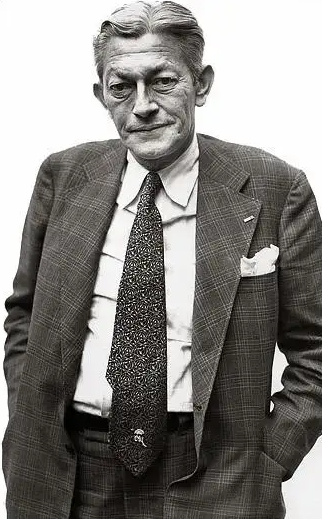
James Jesus ANgleton Circa the 1960s
The purge would not end until roughly two decades had been spent in search of the elusive man whose last name began with a K, may have ended in “sky”, served in Germany, and had the KGB code name Sasha. Upon these parameters set by Golitsyn, the Counterintelligence Staff undertook an exhaustive search of CIA employees and officers but it is notable these searches did not extend to the highest leadership in the CIA. It appeared that James Angleton and Anatoliy Golitsyn realized the extent of their hunt’s reach, if they accused people at the helm of the Agency their hunt would likely be quashed before it truly began. This apparent search limitation in my view offers they could never fully answer the mole question if all related people were not inspected. It further became apparent that Angleton was now overrun with Golitsyn's suspects and began a massive expansion of Counterintelligence Special Investigations Group (CISIG) and his staff. Such additions were not likely to have received support from Angleton’s bosses if he accused them and this confined the search to those at the level of James Angleton or below in the Agency structure that met the prerequisites to be “Sasha.”
As 1961 concluded the abyss opened by James Angleton and Anatoliy Golitsyn deepened and began to claim its first victims within and without the US intelligence structure. The first primary suspect the mole hunters set upon was a notable Agency technical expert who helped develop and expand the Agency’s device spying arsenal for over a decade. Among Golitsyn’s offered information was the KGB possessing knowledge of a major technological advancement the CIA was developing, and the Secretary of the Technical Requirements Board S. Peter Karlow was deemed the primary suspect. Reinforcing these accusations were Karlow fulfilling most of the elusive parameters of “Sasha”, his last name began with K, he served the Agency in Germany during the 1950s, and his original name before his family changed it was Slavic. Just weeks following Golitsyn’s appearance and the claims of a mole, Karlow’s decades of service to the US military and CIA began to unravel.
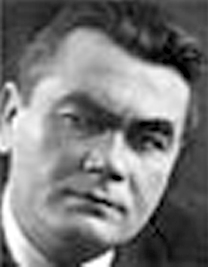
Mole Hunt Target Serge Peter KArlow
Sergei Klibansky aka Serge Peter Karlow was born the same year his parents became United States citizens during 1921. Sergei’s mother was from an affluent Russian family that held textile holdings in Silesia, but these were lost due to the Soviet revolution. Karlow’s father was an in demand vocal performer and sometimes claimed until the revolution to have been Russian due to the prejudice that Germans following WWI faced. Despite this dissociation with Germany, the Klibansky family traveled over a dozen times and lived for periods in that nation amid Sergei’s youth. As 1931 passed the family would suffer a tragic loss when Sergei’s father committed suicide due to financial devastation resulting from the Great Depression. Six years later when Sergei graduated McBurney Preparatory School in Manhattan the family changed its name and Sergei Klibansky became Serge Peter Karlow.
As the early 1940s arrived WWII raged and Karlow left Swarthmore College to join the United States Navy with an intention to enter the ranks of US intelligence. The next year Karlow was assigned to the Office of Strategic Services (OSS) and was responsible for organizing a minor naval squadron to aid field projects in Corsica. While Karlow undertook the rebuilding of a base used by Allied forces he was among the few survivors on his ship when it struck a German mine and exploded. Due to the polluted waters Karlow was forced to have a leg amputated but soon obtained a prosthetic limb and retrained himself to live as normally as possible. Upon his return to the US that year Karlow was greeted by OSS Chief William J. Donovan and received the Bronze Medal for heroics. Donovan subsequently appointed Karlow to serve on his staff until the end of WWII and this appointment in addition to his natural technical expertise later allowed him to join the CIA when it formed amidst 1947. Karlow would spend the 1950s in Europe developing and improving Agency Technical Services Division (TSD) equipment to aid in anti-Soviet clandestine operations.
When 1961 passed Karlow hoped that his longtime service would propel him to lead the Agency's Technical Services Division. However, CIA Deputy Director for Plans Richard Helms assigned Karlow to represent the Agency at the US State Department in a different position. After meeting with Helms about his aspirations Karlow accepted the State Department job in the hopes it would lead to his desired role. Despite that Karlow lost a limb serving honorably in WWII, received the Bronze Star, worked for the OSS, and provided major contributions to CIA’s Technical Services Division, he was a marked man. Yet Serge had no idea yet he was the prime mole suspect and that both the CIA and FBI had already targeted him with surveillance long before he realized it.
Less than four weeks after Golitsyn’s arrival, the CIA’s Office of Security chief Sheffield Edwards formally deemed Karlow a sufficient threat and requested the help of the Federal Bureau of Investigation. During 1962, FBI agents began to approach Karlow to ask for aid regarding purported nearby investigations and requested he allow them to set up surveillance equipment in his residence. It was later when Karlow, a technical expert, noticed his own phone lines were acting slowly in the manner of tapped lines. Additionally, Karlow noticed that phone repair men working on his lines but when he contacted the phone carrier no work had been scheduled. Unseen agents followed Karlow when he traveled and in one episode they observed him delivering a large package which some assumed might be information to Soviet handlers. They would be disappointed after learning the large box contained Karlow’s prosthetic leg and it was being serviced. When Karlow returned to Helms in the summer of 1962 about his desired position in TSD he was instead assigned to the Economic Services Division.

Notable Case Officer George Kisevalter
During the summer of 1962, KGB officer Yuriy Ivanovich Nosenko made contact with the Agency via later CISIG member Tennant Bagley and Soviet Division case officer George Kisevalter.ii Each man were notable officers and had prior experience handling Soviet defectors but following the meetings with Nosenko they left with nearly diametrically opposite impressions. Nosenko told the Agency men he did not want to leave Russia but serve as a defector in place and further admitted his initial claims were a contrived pretext to meet with them. Following an extensive debriefing that included several questions regarding “Sasha” provided by CISIG member Bruce Solie, Nosenko reportedly had no knowledge of such a mole run by the Soviets. He did offer information regarding a KGB double agent that claimed CIA allegiance, provided the location of several microphones planted in the Moscow US Embassy, and most troubling he provided intelligence that a dead drop setup for defector Oleg Penkovsky had been compromised. This information likely explains the discovery of the relationship between Grenville Wynne and Oleg Penkovsky in the fall of 1962 that led to Wynne’s expulsion from Russia as a foreign agent and Penkovsky’s summary execution.iii
Interestingly, some of the information that Nosenko provided would clarify a few Golitsyn claims and combined the information revealed at least one double agent in the British admiralty. Yet Anatoliy Golitsyn had already tired of the Soviet Division’s questions and now was entirely advising CISIG but his eyes wandered across the oceans to possible other moles he might find. The chasm in the CIA had begun widening following appearance of another seemingly important defector. While Angleton and Bagley mistrusted Nosenko as a prevarication akin to Golitsyn’s false defector allegations, Kisevalter and others believed he was the genuine article.iv The effects of this debate would have extreme ramifications for nearly every person involved.
Elsewhere during the fall, Serge Karlow hoped the Economic Division job was the last test Helm’s would require and finally appoint him to lead the TSD. Yet he would discover by December that Richard Helm’s turned down the request for a promotion. Subsequently the FBI’s Washington Field Office summoned Karlow to face accusations of betrayal and extensive questioning about his life and travels. Bureau agents utilizing a polygraph machine accused Karlow of being a Soviet mole for nearly a week until they concluded their inquiry, but the Agency hunt continued unabated. With his reputation destroyed Karlow was convinced his intelligence career was over but he desired to understand what precipitated his downfall.
Serge Peter Karlow sought out James Angleton to observe the man who ultimately had overseen his undoing. Karlow was told by the counterintelligence leader his case was related to a Russian defector and that Serge must not discuss the matter with anyone. Despite accusations of betrayal and disloyalty leveled by Angleton and his staff at Karlow, the Agency technical expert was required to remain silent about the injustices he faced.v vi Serge left the CIA determined he would restore his name, but this type of impropriety would recur so long as the letter K and a defector’s word might end a career. Karlow was never told until years later the FBI agents, unlike his CIA colleagues, believed he was innocent. Despite the lack of evidence Karlow was offered like a sacrifice to the mole hunt and he would be just the first of many.
Sincerely,
C.A.A. Savastano
References:
i. James J. Angleton, Anatoliy Golitsyn, and the “Monster Plot”: Their Impact on CIA Personnel and Operations, December 2011, Studies in Intelligence, Volume 55, Number 4, Central Intelligence Agency, cia.gov, p. 42
ii. CIA Consolidated Files, Tennant Harrington Bagley, Primary Evidence Collections, Central Intelligence Agency, tpaak.com
iii. Alex Palmer, March 18, 2021, The True Story Behind ‘The Courier’, Smithsonian Magazine, smithsonianmag.com
iv. Tennent Bagley: CIA Agent at the heart of the controversial defection of Yuri Nosenko who came to believe the Russiand was a plant, March 05, 2014, The Independent, independent.co.uk
v. David Wise, 1992, Molehunt: The Secret search for Traitors that Shattered the CIA, Random House, New York, pp. 81-95
vi. Louie Estrada, November 8, 2005, CIA Officer Serge Peter Karlow, 84, The Washington Post, washingtonpost.com
Find the Wall Street Window version and other articles by C.A.A. Savastano here
Related Articles:
How The Stories Of These Soviet Cold War Defectors Reveal The Intelligence Abyss
How The Stories Of These Soviet Cold War Defectors Reveal The Intelligence Abyss p. 2
How The Stories Of These Soviet Cold War Defectors Reveal The Intelligence Abyss p. 3
August 1, 2023
CIA Consolidated Files and Cryptonym Collection Updates

Four CIA Consolidated Files biographies with additional new and related files that regard counterintelligence leader James Angleton, defector Anatoliy Golitsyn, mole hunt target Serge Peter Karlow, and Soviet division case officer George G Kisevalter.

Additionally, four new verified cryptonyms for your review, AMPARTY-1, DULAUREL-1, LINIMENT, and LINOZZLE.
July 10, 2023
How The Stories Of These Soviet Cold War Defectors Reveal The Intelligence Abyss pt. 3

The proverbial intelligence abyss expanded with the revelations of each new defector, exposure of double agents, and fed a growing suspicion of hidden moles within Western clandestine groups. Due to a nearly perfect storm of facts mixed with paranoid speculations a significant expansion in hunting for such agents would commence following the appearance of two final related defectors. As familiar intelligence officers dealt with the latest defectors and longstanding suspicions mounted over the prior years, it was a matter of time before the right defector and claims inspired certain intelligence leaders to adopt the belief that a hidden traitor likely existed within their own group. The 1960s had just begun and before that decade ended several careers, some lives, and multiple intelligence group operations would lay in shambles.
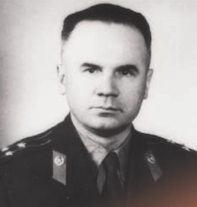
GRU LT. Colonel Oleg V. Penkovsky
Three years before the formation of the Union of Soviet Socialist Republics, Oleg Vladimirovich Penkovsky was born within the imperial territory of Vladikavakaz, Russia on April 23, 1919. By 1937, Penkovsky had joined the Soviet Army and served during WWII until suffering a critical shrapnel wound amid 1944 which took four of his teeth. During his recovery Oleg befriended a fellow injured veteran Red Army General Sergei S. Varentsov and in time earned the older man’s friendship and loyalty. After dealing with a painful family episode for Varentsov the thankful general had arranged for Penkovsky to attend a prestigious Russian military academy. This led to a military intelligence reassignment and by 1955, Oleg served in Russia’s GRU (Glavnoye Razvedyvatelnoye Upravlenie) military intelligence group under military attache cover in Turkey.

MI6 COnTAct Grenvile M. Wynne
However, Russian political leadership in time uncovered that Oleg’s father had died in battle serving the imperial White Russian army and this affected Penkovsky’s advancement. Upon his subsequent return to Moscow Oleg attempted multiple times over the following years to contact and offer intelligence to both US and Canadian covert groups.i During this period he provided information via third parties and drew the notice of CIA officer George Kisevalter but the CIA had not yet created a Moscow Station. Additionally, some Western intelligence leaders were suspicious that Penkovsky’s attempts to make contact were a Soviet provocation until amidst 1961 the British Secret Intelligence Service (SIS, MI6) using its contact Greville Maynard Wynne accepted the Russian’s overtures. A collaborative operation between the Central Intelligence Agency and MI6 would emerge to oversee Lieutenant Colonel Penkovsky and the trove of photographic and documentary information he offered. Among those repeatedly debriefing this important defector in place more was Agency case officer George Kisevalter, who also served as case officer to the formerly betrayed Pytor Popov.
During a cold night months later on December 15, 1961 a largely unseen shift in the conduct Western intelligence began at the doorstep of a home within Finland. Helsinki Chief of Station Frank Friberg encountered an unexpected Russian family at the door of his residence that wintry evening. The man claimed initially that his name was Anatoliy Klimov, bore a family, and unveiled a package of documents purloined from his KGB office to provide American intelligence. Eventually the Russian man told Friberg his real name was Golitsyn and time would reveal his path to defection was a long one frought with endless suspicions. The accusations of this single defector emerging from Helsinki in time would change hundreds of people lives across the globe for decades.
Anatoliy Mikhaylovich Golitsyn was born August 25, 1926 inside the city of Piryatin within the Ukrainian territory of Poltava Oblast. Following Golitsyn’s primary education he served as an organizer for the local Communist Party Youth and would attend the Frunze Artillery School, the same military academy that Oleg Penkovsky had attended. Following his military training Golitsyn would request and be transferred to serve in Soviet military counterintelligence. During the 1940s Golitsyn was trained in counterintelligence and became a desk officer supervising related activities in China under the authority of the First Chief Directorate of the Committee for State Security or Ministerstvo Gosudarstvennoy Bezopasnosti (MGB).ii Subsequently Anatoliy requested and was granted a transfer to the Anglo-American Section, Counterintelligence Department of the First Chief Directorate at the MGB’s Moscow headquarters in the course of 1951.

KGB Defector Anatoliy M. Golitsyn
After his operations that spanned from Europe to the United Sates were largely successful Golitsyn was promoted later the same year to Senior Operational Case Officer. Additionally he was among those summoned by Joseph Stalin and his spymaster Lavirenity Beria to discuss a reorganization of Russian intelligence. One year later Stalin was dead and Beria was attempting to unify the Ministry of Internal Affairs (MVD) to become the most powerful intelligence group within the Soviet Union. Among the MVD’s ranks was the newly appointed Deputy Chief of the Russian Emigre Desk of the Counterintelligence Department Anatoliy Golitsyn. His years of counterintelligence training and continued service to Russian leaders allowed his seamless transfer to the KGB Rezidentura in Vienna during 1954 where he focused on the “penetration of foreign intelligence services.”iii This early posting allowed Golitsyn a view of Russian attempts to penetrate Western services and likely influenced his growing paranoia that such things had occurred many times already. By 1960, after multiple reassignments he was serving the KGB’s First Chief Directorate within the American Section inside the Helsinki Soviet Embassy under the alias Klimov.
During the exfiltration of the Golitsyn family from Finland to the United States Frank Friberg noted certain traits of Golitsyn that troubled him. Golitsyn had a tendency to make large unproven claims that if taken seriously would have serious implications for those who believed them. As they traveled Golitsyn would claim that Israel's Foreign Minister Golda Meir was a KGB agent based on his ideas regarding the timing of her visit to Russia amid the 1950s. This and several other claims reportedly made in this period convinced the Helsinki Station Chief that Golitsyn had a tendency to observe spies whenever he chose to see them. Friberg was also concerned with Golitsyn’s eternal suspicion of those who spoke Russian, including CIA employees, and the defector’s tendency to confuse similar names when making accusations.iv Yet all these concerns were sidelined by the success of having recruited a valuable defector and the handling of Golitsyn’s defection was anything but usual.
Normally the Soviet Division of the CIA would handle its own defectors and Golitsyn was during his early days greeted by Deputy Director Charles Cabell and Soviet Division Chief John Maury. Yet this would change because Golitsyn had attracted the interest of CIA Counterintelligence James J. Angleton, who quickly gained access to Golitsyn’s tapes and transcripts. Within this mixture of proven intelligence and wild accusations Angleton discovered a fertile ground for his own long held suspicions. James Angleton was a fixture of American intelligence and Golitsyn’s claims were not just valuable to security if true, but further provided a way for the counterintelligence leader to expand his base of power and influence.
James Jesus Angleton was born during 1917 in the Idahoan city of Boise to James and Carmen Angleton and his middle name was chosen to honor his Mexican grandfather. James and his siblings were raised in both the United States and Italy after his father’s service in WWI and the elder Angleton later undertook a role in various financial businesses that included government commerce. Amidst the 1930s James attended the English preparatory school Malvern College and was enrolled at Yale by 1937. Angleton majored in English Literature, graduated from Yale in the course of 1941, and went on to attend Harvard Law School. He left Harvard to enlist within the US Army infantry by 1943 and was recruited to serve in the Office of Strategic Services (OSS). The OSS was America’s second attempt to create a premier intelligence group that had formed out of the Coordinator of Information’s Office. Angleton’s days within X-2, the Counterespionage arm of the OSS, inside occupied Italy were filled with cultivating sources and operations to assist Allied force collaborations. His undertakings even included using Mafia criminal groups to fight Fascist groups and by the end of the war he was the Counterintelligence Chief of Italy. However, similar to Soviet intelligence groups, American intelligence organizations underwent further transformations that ended his OSS appointment but Angleton cultivated extensive resources and connections developed in the war. This allowed him to find a comfortable place in the final incarnation of the OSS, the Central Intelligence Agency.v
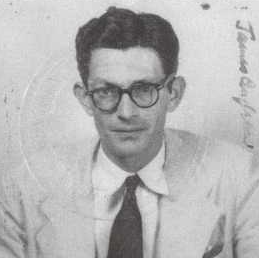
James Jesus Angleton CIRCA the 1950s
Angleton was devout in his Cold War beliefs and served varying CIA leaders well but thrived most under the administration of Allen Dulles. During the 1950s James Angleton would be appointed the Agency’s Counterintelligence Chief and be placed in charge of all Israeli operations. It was from the second floor of CIA headquarters that he constructed a foundation of significant power and cadre of adherents which no other officer but perhaps the Director themselves might possess. He reportedly was brilliant and wielded immense operational acumen that frightened both enemy and friend alike but this was accompanied by a deep unrelenting suspicion of betrayal and unreasonable blinding hatred of all things Soviet. When a prior discussed Polish defector Micheal Goleniewski spoke of Russian dezinformatsiya (disinformation) campaigns this appealed to Angleton’s sense of the great Soviet threat.vi vii However, when his fears were confirmed by Golitsyn and even greater claims were made that piqued the mind of Angleton, the Counterintelligence Staff was allowed to assume control of Golitsyn from the Soviet Division.
Anatoliy Golitsyn had reported to his case officers and subsequently the Counterintelligence Staff that a grand plot was active and that all following defectors beyond him were likely false to discredit him. Helsinki Station Chief Frank Friberg stated that Golitsyn had fed the existing fears of a high level CIA penetration Agent working for Moscow. The defector claimed observing material in KGB possession that was from a sensitive area of the Agency that only a mole could have produced. Yet Friberg’s prior concerns were confirmed by Golitsyn having no clear identity but claiming instead the mole had Slavic ancestry and his last name began with the letter K. Upon these parameters a dangerous hunt began and woe to those within Angleton’s reach that fit Golitsyn’s unclear description.
Sincerely,
C.A.A. Savastano
i. Central Intelligence Agency, (n.d.), Lt. Col. Oleg Penkovsky: Western Spy in Soviet GRU, Doc is letter to be passed to appropriate authorities of the United States, Freedom of Information Act, Electronic Reading Room, Document Number: 0000012268, pp. 1-2, cia.gov
ii. CIA, (n.d.), Subject: Golitsyn Biographical Highlights, National Archives and Records Administration Identification Number: 104-10172-10190
iii. Ibid p. 3
iv. David Wise, 1992, Molehunt: The Secret search for Traitors that Shattered the CIA, Random House, New York, pp. 4-9
v. David Robarge, 2009, The James Angleton Phenomenon, Studies in Intelligence, Volume 53, Number 4, Central Intelligence Agency, cia.gov
vi. C.A.A. Savastano, How The Stories of These Soviet Cold War Defectors Reveal The Intelligence Abyss pt. 2, TPAAK Historical Research, tpaak.com
vii. CIA, March 25, 2011, James Angleton: Master Spy Hunter, Intelligence and Operations, cia.gov
Find the Wall Street Window version and other articles by C.A.A. Savastano here
Related Articles:
How The Stories Of These Soviet Cold War Defectors Reveal The Intelligence Abyss
How The Stories Of These Soviet Cold War Defectors Reveal The Intelligence Abyss p. 2
June 12, 2023
A Traitorous Shade: The Betrayals of FBI Double Agent Robert Hanssen
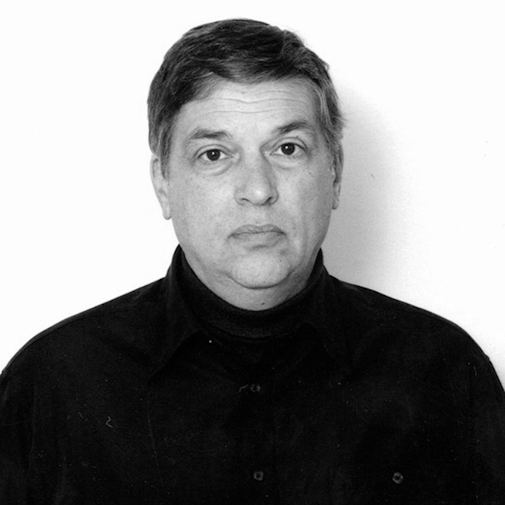
Spies, moles, and double agents are similar but varying types of designations that populate the history of global intelligence. A loyal spy is among the most common type of employee within many national clandestine groups operating throughout history and in modern times, they may be found monitoring and engaging with various parts of a country’s bureaucratic infrastructure or enemy agencies and diplomatic personnel. Moles are much rarer because the classic definition of a mole requires them to be indoctrinated by enemy groups before they obtained access to classified information. Double agents however are less rare than moles because while they do betray the important secrets of their original agency, this betrayal is not premised upon a long planned ideological motivation. A mole is usually a strategically planned infiltration based upon years of training and plans but a double agent often develops upon other circumstances and grievances. Yet some double agents have strategic access to intelligence than might allow them to produce damage comparable to a mole, and one such person deemed among the Federal Bureau of Investigation’s most destructive betrayers was named Hanssen.
Robert Philip Hanssen was born April 18, 1944 as the only child of a Catholic family living near Rosemont on North Neva Avenue. He attended Taft High School during the early nineteen sixties and later studied Chemistry and Russian at Knox College which earned him a bachelor’s degree. Two years later he was pursuing courses in dentistry at Northwestern University before he abandoned that career path to complete a Business Administration Master’s degree.i Amidst 1972, he reportedly joined the Chicago Police Department, similar to his father, and his desire for a greater law enforcement credentials propelled him to seek membership within the Federal Bureau of Investigation. January 12, 1976 Special Agent Hanssen was sworn in to the Bureau’s ranks and began his US intelligence career investigating crimes within Indiana until his transfer to the Soviet counterintelligence unit at the FBI’s New York City field office. Robert Hanssen possessed Top Secret level file clearance during the nineteen seventies and this access was increased to further compartmented information by nineteen eighty. He was eventually able to access nearly any file within the FBI and State Department databases from various positions held at both groups.
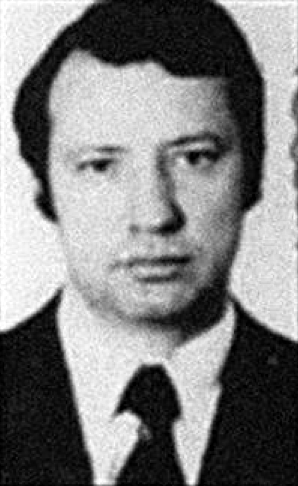
Soviet EMBASSY STaff Valeri Martynov
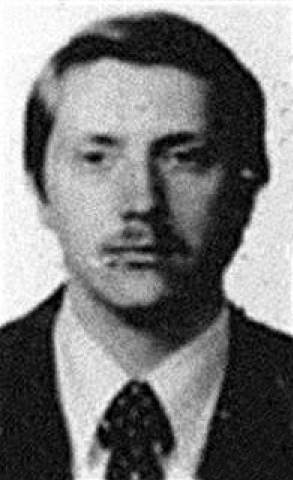
New York Russian Embassy Secretary Sergei Motorin
Since at least October of nineteen eighty-five he was directly providing Russian intelligence with classified information, his crimes according to repeated official groups and public media led to the death of multiple FBI sources and exposure of double agents in the ranks of Russian officials. According to legal files his first letter to the Soviet’s KGB intelligence agency offered two FBI recruited sources within the Russian Embassy located in Washington DC. Embassy Third Secretary Sergei Motorin, Soviet embassy officer Valeri Martynov, and CIA source Boris Yuzhin that was placed inside the Russian state owned TASS news agency were all named in Hanssen’s communication.ii The first two double agents were quickly recalled to Moscow, subsequently charged, and executed for treason. Yuzhin was recalled to Moscow to face a fifteen year sentence of hard labor in Siberia of which he served less than half the sentence. A further later disclosure identified retired GRU General Dmitri Polyakov, a former Deputy Rezident of the Soviet New York Rezidentura and prized FBI double agent code named Tophat. Polyakov after over two decades of undetected spying was captured, tried, and executed during nineteen eighty-six.iii
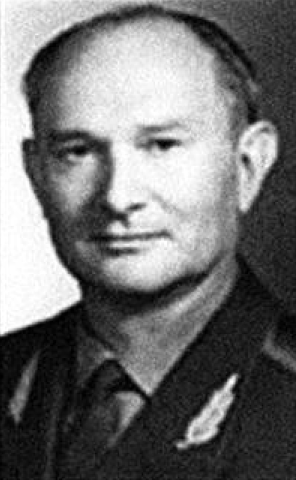
Former GRU General Dmitri PolYAKOV
Hanssen claimed he was inspired in his teen years by a book containing the story of notorious British intelligence mole Kim Philby and ideological reasons motivated him. However, this is challenged by the significant amount of money he received for his forbidden disclosures. At least one communication with Russian intelligence during nineteen eighty-five infers that not pure ideology but seeking to prevent FBI attention to large payments guided his attempts mask them by using gems, jewelry, and other luxury items. Repeated sources divulge he received over a million dollars in “cash, bank funds, diamonds, and Rolex watches” for the national security information offered to both the Soviet Union and later Russian Federation.iv v Among the other secret operations Hanssen was charged with exposing was a US intelligence operation code named MONOPOLY that had created a tunnel beneath the Soviet Embassy in Washington DC to spy on Soviet officials. The hidden area was filled with an extensive amount of National Security Agency (NSA) equipment that was compromised as well.
He appeared to be a content family man and religious conservative member of the Catholic group Opus Dei that was married with six children. Some of his contemporaries stated he bore the appearance of a mortician due to his pale countenance and usual dark suited dress and was further known to ardently collect firearms. The Hanssen family eventually lived in four bedroom house located in Fairfax, Virginia and his children attended expensive preparatory schools funded by his illegal activities combined with his normal FBI salary. Yet this seemingly wholesome background concealed a separate dark side of his personality that included secretly photographing his wife nude and taping sex acts with her to show a close friend. Hanssen frequently met with exotic dancers but reportedly never had sex with those he encountered and instead attempted to convert them to Catholicism. “Priscilla Sue Galey, a stripper who befriended the spy, said she was given cash, jewels, and a Mercedes Benz” and claimed that Hanssen gave her a tour of the FBI training grounds at Quantico, Virginia.vi
Hanssen’s longevity as a double was explained by precautions he took that most later captured double agents and moles failed to utilize and they allowed him to function nearly sixteen years without detection. He never told the Soviet KGB and later Russian SVR intelligence groups his true identity and used the pseudonym Ramon Garcia to interact with foreign spy agencies. Since Robert was trained in counterintelligence and “held key counterintelligence positions, he had authorized access to classified information”.vii Investigators later discovered that Hanssen would spend a significant amount of time surveilling US intelligence by using FBI computer systems and was not held to the security check standards used by other American intelligence groups. Using chalk markers, a series of codes, and dead drops he delivered concealed documents in open areas such as garbage cans or under public bridges to provide classified secrets. Hanssen reportedly passed thousands of files and dozens of computer disks to his Russian handlers that compromised several of FBI’s most vital secrets. Among them was the FBI’s Double Agent program which summarized their current operations and multiple versions of the National Intelligence program papers which revealed interagency plans of the US government. One FBI agent stated of his several precautions “This guy clearly was a real genius at covering his tracks, and he didn't spend a lot of money…I've never seen anything this crafty before."viii
During the period before Robert Hanssen’s detection the FBI had been pursuing a different suspect for Hanssen’s crimes. Their suspect, code named Gray Deceiver, was Central Intelligence Agency counterintelligence officer Brian Kelly but when a tape was eventually produced from the KGB’s Ramon Garcia file it revealed not Kelly but Hanssen was the actual double agent. “A turning point came in 2000, when the FBI and CIA were able to secure original Russian documentation of an American spy who appeared to be Hanssen. The ensuing investigation confirmed the suspicion” and officials dubbed him Gray Day as they later prepared to catch him in the act of betraying the FBI. Officials moved Hanssen under the false premise of a promotion back to FBI headquarters to closely monitor his activities and wait for him to make an error that would expose his treachery.
Amid February two thousand and one after twenty-five years of FBI employment, Robert Hanssen unknowingly was making his last dead drop of information to the Russians inside a northern Virginia park trash can. He was arrested less than month before his retirement and taken into custody with damning classified information held inside the abandoned rubbish package. Hanssen’s trial produced a sentence of life without parole and this was a stark legal example to other potential intelligence betrayers. Greed, prior deceptions that doomed multiple men, the shade of Kim Philby, and Hanssen’s ego led him to spend his final years imprisoned and he recently died in early June at the age of seventy-nine.
Sincerely,
C.A.A. Savastano
References:
i. Lindsay Whitehurst, June 5, 2023, Robert Hanssen, ex-Chicago cop turned FBI agent who was convicted of spying for Russia, dead at 79, Chicago Sun Times, chicago.suntimes.com
ii. The United States v. Robert Philip Hanssen aka Ramon Garcia…, Affidavit in Support of Criminal Complaint, Arrest Warrant and Search Warrants, V. The KGB’s “B” Operation, The Federation of American Scientists, fas.org
iii. Nigel West, 2006, Historical Dictionary of International Intelligence, The Scarecrow Press, pp. 123-125
vi. L. Whitehurst, Chicago Sun Times
v. Robert Hanssen, n.d., History: Famous Cases and Criminals, Federal Bureau of Investigation, fbi.gov
vi. Richard Polina, FBI agent who took down sexually deviant spy Robert Hanssen says traitor wanted to be “James Bond”, June 6, 2023, New Pork Post, nypost.com
vii. Robert Hanssen, fbi.gov
viii. Peter Dizikes, February 20, 2001, How the FBI Tracked Robert Hanssen, ABC News, abcnews.go.com
Find this and other articles by C.A.A. Savastano at the Wall Street Window
May 24, 2023
New Documents reveal Officials Destroyed far more Evidence related to the Kennedy Assassination than prior believed

Even in modern times the illegal possession, loss, or destruction of government files appears within recent media and has been a consistent means of depriving the public access to documents that may incriminate or embarrass leading bureaucrats. Over the last five decades hundreds of thousands pages of documents have been released concerning the assassination of President John F. Kennedy, nevertheless thousands of documents were by intent or ignorance destroyed or lost. Whether you consider the dozens of files lost within Lee Harvey Oswald’s 201 file or those destroyed by at least one medical expert that conducted the autopsy, some officials have desired that feasibly important files never reach public eyes. Upon this lack of knowledge some reasonable ideas turn and the illegal destruction or loss of files leaves related officials but two unsavory choices, malfeasance or ignorance. The destruction of documents by officials has rendered public claims that were scoffed at or diminished by those who support the official version of events greater credibility. Yet more recent less redacted files support the amount of documents destroyed has been largely underestimated despite the claims of several government leaders.
The destruction of J. Edgar Hoover’s confidential private office files and sometimes the most incriminating documents in his collection has been a much discussed matter. The Bureau’s creator and leader ruled over a portion of the US intelligence and law enforcement structure for decades and several presidents while amassing a huge collection of private files and evidence. Roughly twenty years ago the Federal Bureau of Investigation announced on its website that 17,000 pages of Hoover’s most secret files gathered over nearly sixty years were provided to the public but most had “already been released”.i They claimed the 165 files that numbered 17,000 pages would be useful to future historians despite that most of the information was known before the National Archives took possession of them. However, the destroyed amount of J. Edgar Hoover’s files by his subordinates and reportedly at his command following his death have never been truly quantified.

FBI Director JOHN Edgar Hoover
The press long ago reported the story of and some official sources confirmed that files were destroyed, some by Helen Gandy who reportedly served as Hoover’s personal secretary for several decades. Gandy testified to the House of Representatives Subcommittee on Government during the nineteen seventies and informed them she had at Hoover’s request destroyed “his personal correspondence”.ii Multiple related Bureau leaders such as William Sullivan affirmed that some of this “correspondence” may have related not just to personal matters but derogatory and potential blackmail files on American citizens that Hoover considered possible threats. However, Gandy denied that any destroyed files were of substantive use to Congressional investigations, yet did not provide any specific number of files destroyed. Despite Gandy’s reassurances, all such material that was created in Hoover’s official position and funded by the government were part of the evidentiary and historical record, and no one had the right to destroy them without consultation of higher authorities. Seemingly that was the end of the matter but documents within the files related to the Assassination of President John F. Kennedy released last year by the National Archives offer some additional information.

J. EDGAR Hoover’s Personal Secretary Helen Gandy
Mr. Raymond Smith was interviewed by Senate officials and stated that he was among those moving a heavily laden truckload of many filing cabinets to J. Edgar Hoover’s residence. Smith and his supervisor Tony Codi were tasked to transport the potentially thousands of files and did not use the usual moving crew but other unknown people were at the residence to offload the cabinets. One cabinet that fell open during the later transport via the side gate of the former FBI Director’s home contained several manila folders and Smith testified they were quite heavy. Smith offered that one day was not enough to transport all the documents taken into Hoover’s basement and he was used a second day to transport another smaller truckload of files with additional boxes as well.iii Justice Department employee Thomas Peyton reaffirmed the claims of Smith and states having observed roughly one hundred boxes of contents and several filing cabinets delivered to a basement recreation room.iv FBI Washington field office Chief Clerk Thomas Dudney recalled weeks following Hoover’s death he was instructed by FBI Agent Kunkel to destroy roughly six boxes of files at his and he personally did so over two days with assistance. While there were personal correspondence and other items of no real importance, several files were observed and significantly the many filing cabinets of information were never reviewed by most transporting them for destruction. Presumably the public was denied hundreds and perhaps thousands or more of useful files that were instead destroyed at the request of J. Edgar Hoover. No significant official inquiry has attempted to determine if any material survived or tried to recreate the knowledge purged by officials, yet these illegal and unjustified actions might pale in comparison to another official purge of documents revealed by recent files.

Defense Secretary Robert McNAMARA
During the summer of nineteen sixty-one Defense Secretary Robert McNamara was convinced the United States military required a unified military group to represent the several military intelligence groups.v Through McNamara’s influence and with the approval of President Kennedy and support from the Joint Chiefs of Staff his department established the Defense Intelligence Agency (DIA) to “combine a number of intelligence functions heretofore carried out independently by the separate military departments”. Among its “principal objectives” was “obtaining greater unity of effort among all components of the Department of Defense in developing military intelligence and as strengthening the over-all capacity of the Department for collection, production and dissemination of Defense intelligence information.”vi The Central Intelligence Agency (CIA) was apprehensive regarding the DIA’s creation due to its absorbing the collective military’s intelligence functions that “Inevitably was of concern” likely due to the CIA’s use of military assets and bases across the globe. During early nineteen sixty-three notable Agency officer Lyman Kirkpatrick informed his superiors of a conversation with DIA leader Joseph Carroll regarding “clandestine collection” and “current intelligence production.” Multiple later CIA leaders, including Deputy Director of Science and Technology Albert Wheelon, would additionally perform reviews of CIA and DIA relations and criticize its military minded approach to intelligence collection. November twenty-second nineteen sixty-three President John F. Kennedy would be assassinated in Dallas, Texas.
“By 1964...the number of key directorates had doubled...with the addition of directorates” for “scientific and technical intelligence.” It appears this quickly expanding agency would have amassed a sizeable collection of files regarding military intelligence that may have offered a wealth of information regarding the history of that era. Yet despite the sizable amount of files likely generated by the DIA or those it collected from related agencies pertaining to important historical matters or the Commander in Chief of America’s military, most later investigators of President Kennedy’s assassination were instead concerned with files destroyed or concealed by the FBI and CIA. While officials had legitimate and sometimes verified reasons to focus on those and a few other related groups such as the Secret Service, it was not until much later officials finally questioned the DIA and sought missing pieces of the historical record it might provide. With the massive expansion of the DIA and its resources by the late nineteen seventies the group finally came to the attention of House Select Committee on Assassinations (HSCA) investigators.
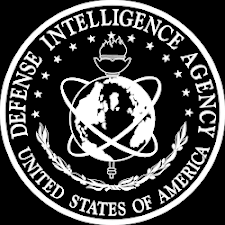
EMBLEM of the DIA
Official congressional requests to obtain related files from National Security Agency (NSA) and Defense Intelligence Agency employees offered a startling admission which changes the landscape of the evidentiary record. DIA official Mr. Roger Denk informed congressional officials the DIA “has destroyed all of its files which might related to the assassination and that, therefore, he had nothing to offer”.vii Thus, the collection efforts of US military intelligence and even any extraneous file that might relate to the assassination was purged without higher approval, nor was there any explanation for what motivated such action. Additionally, we do not know exactly when this purge occurred and how many potentially thousands or tens of thousands of files were destroyed. Despite several investigations by the US legislature concerning the assassination of President Kennedy, the DIA took it upon itself to decimate the record and provided no sufficient explanation for its actions. While the CIA, FBI, and other intelligence groups were often derided in the media for covering up potential connections and files of interest, the DIA exceeded all of them in its hubris by deciding to permanently damage the historical record for reasons unknown.
It appears some military intelligence officials have attempted to sanitize the historical record of all information regarding the assassination of President Kennedy. The destruction of any related evidence held by the DIA is no mere conspiracy theory, it is confirmed fact by officials themselves. There is no beneficial purpose that such abrogations of duty and law have occurred, only potentially illegal ones. The question as ever remains, why and to what specific end?
Sincerely,
C.A.A. Savastano
i. Federal Bureau Of Investigation, July 11, 2005, A Byte Out of History: J. Edgar Hoover’s “Official and Confidential” Files, fbi.gov
ii. Secretary Says She Destroyed Hoover’s Letters on His Orders, December 2, 1975, The New York Times, nytimes.com
iii. Senate Select Committee to Study Governmental Operations with Respect to Intelligence Activities, October 23, 1975, Interview of Raymond Smith, National Archives and Records Administration Record Number: 32989549, archives.gov, pp. 1-6
iv. Ibid, Interview of Thomas Peyton, pp. 1-3
v. Office of the Secretary of Defense, July 6, 1961, Memorandum for the President, Subject: The Establishment of a Defense Intelligence Agency, Georgetown National Security Archive, nsaarchive2.gwu.edu
vi. Department of Defense Office of Public Affairs, August 2, 1961, News Release: Department of Defense Announces New Defense Intelligence Agency, Georgetown NSA, nsarchive2.gwu.edu
vii. National Security Agency, June 15, 1978, HSCA Request for NSA Material on Kennedy Assassination, NARA No. 144-10001-10263, archives.gov, p. 1
Find the Wall Street Window Version of the article here
April 27, 2023
How The Stories Of These Soviet Cold War Defectors Reveal The Intelligence Abyss pt. 2

Within the murky depths of the historical intelligence abyss lies a nearly ceaseless array of unanswered questions and varying accusations, some affirm or deny the credibility of several figures related to unresolved historical mysteries. The last article in this series began a descent into reviewing the valuable but often inconsistent nature of multiple defectors that dealt with intelligence groups. From Pyotr Popov, a reliable double agent that was later exposed and executed, to Peter Deriabin a source of valuable intelligence who later offered less reliable claims regarding significant world events based on mere postulations are just two varying historic tales. Defectors can each offer vital intelligence, but they simultaneously might also render consequential negative effects for those dealing with them. The question is how much weight the claims of a defector should be given, at what point could they be wrong, and even if they are false defectors or moles intent on misinforming the very people they claim to aid. Defectors and moles can both appear nearly the same in the vastness of historical intelligence and in rare cases are precisely that.
Russian espionage agent Reino Hayhanen defected in the late spring of nineteen fifty-seven from the KGB intelligence service by contacting the US Embassy in Paris. He was born the son of peasants located near Leningrad amidst nineteen twenty but overcame this humble background to receive schooling akin to a teaching certificate. By nineteen thirty-nine Hayhanen was a primary school teacher but soon attracted the notice of his country’s secret police the NKVD and was employed by them. His prior study of Finnish made him useful in the middle of a war between the Soviet Union and Finland and Hayhanen was assigned to interrogate prisoners, process documents, and served as the local NKVD translator. Following the military conflict, he was utilized for developing informants, checking the loyalty of Soviet workers in Finland, and identifying anti-Soviet elements within Finnish society. Hayhanen was deemed an expert regarding Finnish intelligence and joined the NKGB Soviet intelligence group. During nineteen forty-eight he was reassigned to the newly established KGB and trained in photography, decoding secret transmissions, and studied English.i
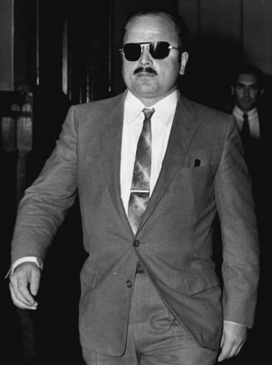
KGB Defector Reino HayhaNEN
The next year Hayhanen continued his KGB training and had severed ties with his family to aid establishing the new assigned identity of “American” laborer Eugene Maki. The Maki identity had been stolen from a family of former US citizens that prior left America for Russia and were unable to subsequently escape the Soviet Union. Reino would spend years under his alias establishing a cover in Finland to undertake future espionage missions in the course of the early nineteen fifties. By nineteen fifty-two Hayhanen was newly married using his alias and had convinced American officials in Helsinki to provide him a passport for his eventual travel westward. After five years of undertaking clandestine operations for the KGB in Europe and the United States he was ordered back to Moscow. Time spent in wealthier more liberal countries paired with his growing disillusionment of Soviet officials and policies drove him to defect. According to official files a little known conflict began when this defector was repeatedly passed between the Central Intelligence Agency and the Federal Bureau of Investigation.
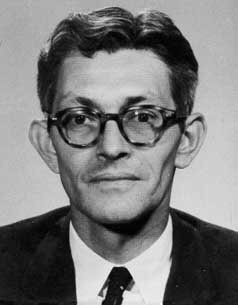
CIA Counterintelligence Chief James J. Angleton
Hayhanen made contact with US embassy officials and this alerted the CIA officers within the same building that were part of its Paris Station by nineteen fifty-seven. Agency Counterintelligence Chief James Angleton contacted FBI Domestic Intelligence Chief Alan Belmont in May regarding Hayhanen and was informed the FBI would not accept his defection unless his claims were substantiated. The CIA noted days later “Hayhanen had suffered almost a complete mental breakdown and that in view of his condition, arrangements were made for him to be returned to the US. by plane.” The Agency would give Hayhanen to FBI agents in New York and because of his “emotional state” they imprisoned him at the “U.S. Marine Hospital in Staten Island” for a handful of days. The Bureau then released Hayhanen and returned the defector with his wife to their New York home while providing some compensation for cooperation for just over a month. Yet “after a short handling period in the US the Bureau dropped Hayhanen, an alcoholic, because he became a problem and CIA took the responsibility of safeguarding him, giving the Bureau free access to him and time to develop leads…” During the next year Hayhanen would expose several methods of Soviet clandestine practices that included a hollow nickel which provided the ability to easily pass secret information and provided US officials with the identity of his Russian intelligence handler “Mark”.
Following Mark’s apprehension and interrogation he admitted to being KGB operative William August Fisher aka Rudolph Ivanovich Abel whose dwelling provided US intelligence groups a wealth of spy equipment and technological gadgetry used by the Russians. Abel would be convicted by a jury and his sentence was appealed but upheld by the US Supreme Court during 1960.ii The FBI’s liaison to the CIA Sam Papich years later reported to J. Edgar Hoover that Agency officials were not pleased most of the credit for Hayhanen’s defection and testimony was given to the Bureau. The valuable information revealed by Reino Hayhanen and confession of Rudolph Abel would additionally destroy a prior functional spy ring and years later Abel was traded for captured U-2 pilot Francis Gary Powers. Nevertheless, Hayhanen like most defectors was a man with some credibility issues, similar to the drinking issues and mental troubles of Vladimir Petrov, and was handled by competing official groups.iii By 1961, Reino Hayhanen would die in a car wreck on the Pennsylvania turnpike and some would claim it was KGB revenge for his betrayal. Nevertheless, his demise would remove another valuable but troublesome agent from the use of American intelligence groups.
With the arrival of the nineteen sixties multiple additional defectors would approach the Central Intelligence Agency seeking to relocate westward beyond the reach of Soviet power. Polish intelligence officer Michael Goleniewski of the Sluzba Bezpieczenstwa (SB) defected from his country's intelligence service during 1961 and proved to be of significant use to Western officials due to his prior simultaneous operational service for the Soviet KGB. He was born in Poland’s northeastern city Nieswiez amidst 1922 and graduated high school shortly before WWII in nineteen thirty nine. Goleniewski attempted to hide a period of collaboration with later occupying German forces and subsequently joined the Polish Workers party. He was able to gain positions in the Communist government and these jobs led to the Polish intelligence service recruiting Goleniewski. Among his varying posts was regional counterintelligence chief, deputy head of scientific and intelligence branch, and this led to contact with the KGB, and later the CIA by nineteen fifty-eight.iv
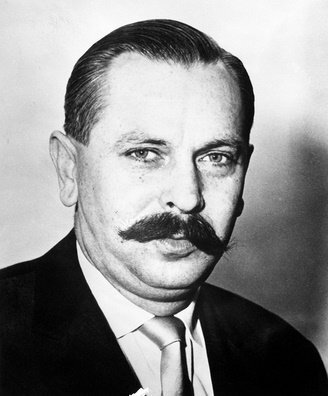
SB Defector Micheal Goleniewski
Michael was among the few intelligence agents that had convinced both his own country’s officials and Soviet officials that he was loyal to each but eventually betrayed them to a third government. Among the information he reportedly offered the CIA was the identity of hundreds of Soviet agents in Western countries and double agents that included a significant British Secret Intelligence Service (SIS aka MI6) traitor George Blake who some have blamed for the death of defector Pytor Popov. Goleniewski, like prior defector Peter Deriabin, would be among the earliest sources to report the Soviet use of “dezinformatsiya” (disinformation) campaigns that had been undertaken by the KGB since at least the 1950s. Dezinformatsiya was “the deliberate and purposeful dissemination of false information regarding accomplished facts and/or intentions, plans of action, etc., for the purpose of misleading the enemy.” “While Goleniewski was not the first source to refer to dezinformatsiya, he was the first to bring it to CIA consciousness as a technique to be reckoned with in our analysis of the USSR’s foreign policy.”v Michael further offered that in the event of a KGB defection Soviet officials might use the same technique in attempts to discredit accurate intelligence sources.
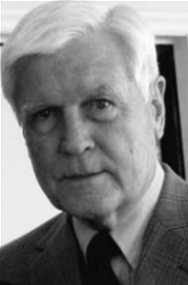
CIA Officer T.H. Bagley
Agency fixture Tennant Harrington Bagley served in different periods as Foreign Intelligence Operations Section officer, was a subsequent lieutenant of James Angleton’s Counterintelligence Special Investigations Staff (CISIG), and eventually was the Deputy Chief of the CIA’s Soviet Division.vi He was among those charged with prior handling multiple important defectors that included Pytor Popov, who was discovered and executed, and Michael Goleniewski. Bagley further dealt with additional later contentious defectors that triggered a wide ranging investigation targeting dozens of Agency officers based upon less than proven claims. He similar to Angleton was eventually convinced that a mole likely existed within the ranks of the CIA and other Western intelligence groups. Yet the compromising of Popov and eventual unraveling of Goleniewski’s credibility that occurred following his involvement caused Tennant Bagley himself to fall under later suspicion.
Goleniewski was eventually sidelined and some have claimed the CIA began to deprive him of prior agreements for citizenship and other benefits when he was deemed unimportant by another later Soviet defector. Unfortunately, like other notable defectors Goleniewski’s began to make impossible demands and claimed that he was the heir to Russia’s imperial throne. He additionally began a letter writing campaign to CIA leaders and even published his claims in paid newspaper advertisements. Seeking to preserve his past successful usage as a source of information, the Agency would do its best to conceal him from US officials that desired further interviews. Goleniewski proved to be an intelligence boon and later public embarrassment which reveals the dual nature of handling defectors. If a defector’s useful intelligence was allowed to influence their handling too greatly and unreliable claims were left unchecked, it might permit success to be compromised by fanciful claims which destroyed any later credible use.
November of the same year Goleniewski was utilized by the US officials another KGB defector would emerge, the assassin Bogdan Nikolaevich Stashinsky. He was born during nineteen thirty-one in a village outside the city of Lviv in the west of Ukraine to impoverished parents. During his late teens Stashinsky would undertake studies in Lviv to become a math teacher and in his travels between home and school he was held by local police for riding without a ticket. Reportedly, he was let off with merely a questioning but Bogdan would later be summoned again by Russian authorities and was “blackmailed into becoming an informer” via threats toward his family.vii Stashinsky would soon become active in operations for the Soviet MVD intelligence group by using his sibling to lure out underground Ukrainian nationalist leaders opposing Russian officials. This effectively caused a rift with his family and left Bogdan to a life of posing as a translator in East Berlin while serving in multiple intelligence groups and ultimately he was a KGB agent in Thirteenth Department.viii During the nineteen fifties at least two Ukrainian nationalist leaders were assassinated by Stashinsky using specialized handheld weapons that sprayed a highly poisonous mist.
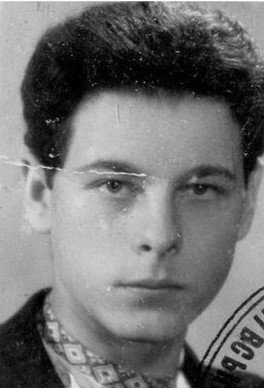
KGB Defector Bogdan Stashinsky
As his career developed Stashinsky would become romantically involved and marry Inge Pohl to whom he later confessed his crimes and she reportedly convinced him to surrender himself to Western officials. The couple had a child that died the same year Stashinsky would chose to defect and it was the funeral that provided them a chance to flee. Unfortunately Stashinsky was rebuffed by the CIA due to his varying identification papers stolen from the KGB, claims of assassination without evidence he offered during interrogation, and the unique manner of weapons used. After being given to West German officials Bogdan was interrogated and imprisoned while his wife had been left alone but free. Unlike US officials, after repeated interviews German authorities investigated his claims at multiple crime scenes and eventually concluded he was reliable.
Bogdan was put on trial in West Germany during nineteen sixty-two and found guilty but sentenced to less than a decade of prison. The light sentence and Stashinsky's ability to vanish following release from prison a mere four years later were feasibly due to useful intelligence material that was shared more completely with German officials.ix Yet by then his former wife had filed to divorce him and he was left without a homeland, spouse, or family. According to one historical intelligence scholar the CIA was responsible for reengaging with Stashinsky once his bonafides were established by German authorities and resettled him to South Africa.x He was later found living in that nation based on local police reports that state he was granted asylum in a nation largely beyond the diplomatic reach of the Soviet Union. A related media article states, “He is probably still living there, always looking over his shoulder, aware that the old habits of KGB die hard, if at all.” Yet Stashinsky was just the beginning of defectors that had trouble establishing themselves and eventually nearly every later defector was highly suspect due to evolving factions within the Central Intelligence Agency.
A single defector would later claim all others following them were false agents in a seemingly unlikely grand Soviet plot of dezinformatsiya to confound Western intelligence. Agency Chief of Counterintelligence James Angleton for years would be this person’s main champion because the Soviet defector’s claims reinforced his prior deep suspicions of moles in his midst. Due these eventual claims men would die, loyal officials would have their reputations destroyed or be labeled traitors, and James Angleton would lose nearly all the power and influence he spent decades constructing. These claims would confound and hamper Central Intelligence Agency operations and the functionality of its Soviet Division for more than a decade. The defector responsible for this huge shift in policy and the resulting fallout was named Golitsyn and the related claims would shake the foundations of American intelligence.
Sincerely,
C.A.A. Savastano
References:
i. Federal Bureau of Investigation, (n.d), Hollow Nickel/Rudolph Abel, Famous Cases and Criminals, fbi.gov
ii. Espionage: Pudgy Finger Points, October 28, 1957, Time Magazine, content.time.com
iii. Federal Bureau of Investigation, Partial of 124-10185-10098-8, Relationship with CIA The Abel Case, pp. 1-3
iv. Tim Tate, January 1, 2022, He was the West’s Most Important Undercover Spy. An Affair Brought it All Down, Politico Magazine, politico.com
v. Central Intelligence Agency, (n.d.), Study: “The Monster Plot” aka the Hart Report, pp. 113-115
vi. CIA Consolidated Files, Tennant Harrington Bagley, Primary Evidence Collections, Central Intelligence Agency, tpaak.com
vii. Espionage: A Poor Devil, Friday October 26, 1962, Time Magazine, content.time.com
viii. CIA, February 17, 1964, Russ Holmes Work File, Soviet Use of Assassination and Kidnapping, pp. 8-9, The Mary Ferrell Foundation, maryferrell.org
ix. Serhii Plokhy, January 5, 2017, How a KGB Assassin Used the Death of His Child to Defect, Politico Magazine, politico.com
x. Nigel West, 2006, Historical Dictionary of International Intelligence, Bogdan Stashinsky, The Scarecrow Press, pp. 242-243
Find the Wall Street Window version here and other articles by C.A.A. Savastano



